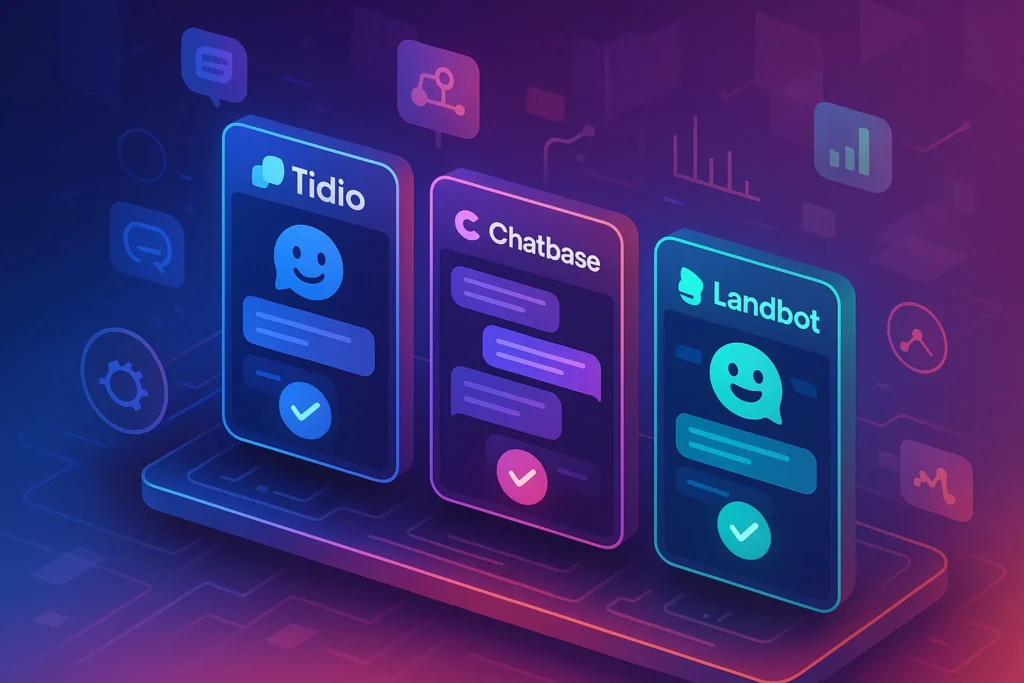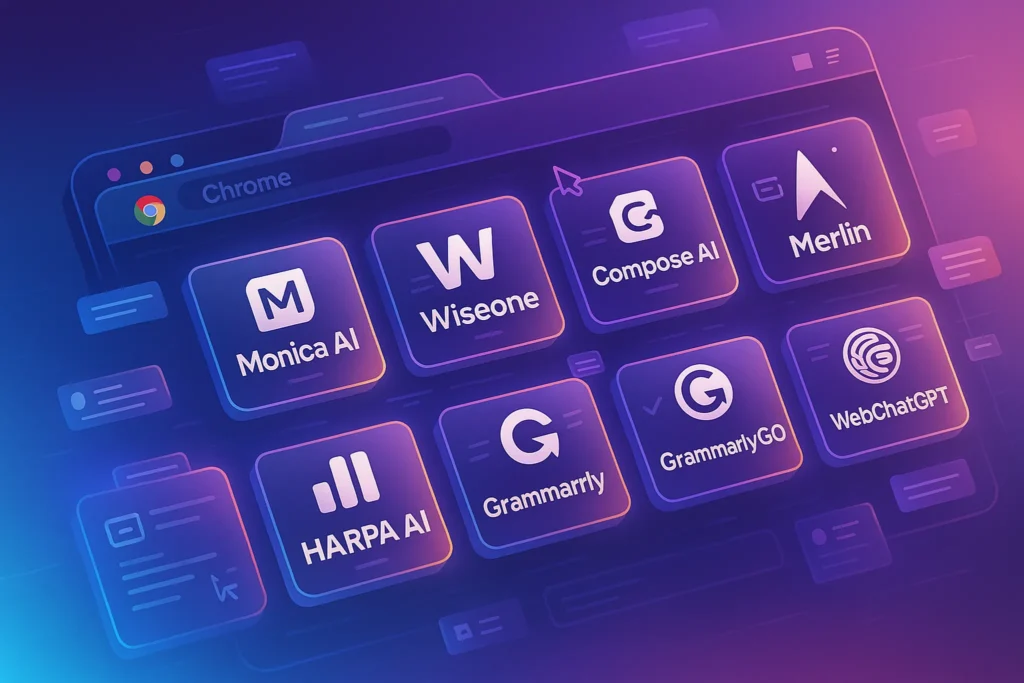-This post may contain affiliate links. If you click on one and make a purchase, I may earn a small commission at no extra cost to you.-
🧠 Introduction – Level Up Your Content with AI Voiceovers
Creating compelling voice-overs for videos and podcasts usually means hiring voice artists—or spending hours recording yourself. But AI voice tools are changing the game. These platforms now offer natural-sounding, context-aware narration with realistic pacing, emotion, and clarity. Whether you’re producing YouTube Shorts, audiograms, or full episodes, AI voices can save you time and boost production value.
This article covers the top 5 AI voice tools—highlighting their best use cases, pricing, and affiliate options so you can pick the right one for your workflow.
🎧 1. ElevenLabs
What is ElevenLabs?
ElevenLabs is a neural text-to-speech platform that uses cutting-edge deep learning to generate human-like voiceovers. Its advanced “Expressive Voices” feature goes beyond robotic tones, allowing creators to control emotional cadence—like calm, excited, or dramatic—directly affecting listener engagement.
How it’s used:
Once you paste your script into ElevenLabs, you can adjust voice attributes—speech speed, tone, and emotional intensity—until the output matches your brand’s personality. The platform supports voice cloning too; you can train it on 30 minutes of your own voice, then generate future content that truly sounds like you—without re-recording.
Real-world impact:
A YouTuber repurposed short educational content into multilingual minutes-long Shorts. With expressive voice modulation, the videos retained an engaging tone that boosted watch time by 40%—all without a studio setup or voice actor.
Business value:
-
Time savings: No need for repeated self-recording.
-
Consistency: A cloned voice retains brand identity across hundreds of videos.
-
Scalability: Produce episodes, explainers, and Shorts at scale with the same voice tone.
Why Choose It
ElevenLabs is known for ultra-realistic voice modeling, customizable emotional tone, and granular control over syllable stress and pacing.
Use Case:
A YouTuber used ElevenLabs to narrate short educational snippets. The AI’s “Expressive Voices” feature added just enough cadence and energy to match the visuals—saving him hours compared to manual recording.
Key Features:
-
Neural Text-to-Speech with emotion
-
Custom voice cloning
-
Export as MP3/WAV
Pros & Cons
✅ Pros: Extremely realistic tone, clones your voice, full emotional control
❌ Cons: Pricier at scale, voice-cloning requires 30 minutes of audio input
Pricing:
-
Free tier allows limited narration (~10 minutes)
-
Pro plans start at $29/month
-
Try ElevenLabs (Free Trial)
🧠 2. Murf
What is Murf?
Murf offers a studio-style voice-generation environment with dozens of accents and nuanced human voices. Unlike simpler TTS tools, Murf provides tools to edit tone, insert pauses, and match voice pacing to onscreen visual cues.
How it’s used:
Upload your text, choose a voice—such as a confident American male or warm British female—and fine-tune pauses or emotional inflections. Murf’s timeline editor allows you to align voiceover with video timecodes, making it ideal for tutorial or demo videos.
Real-world impact:
A podcast host revamped their weekly series. Using Murf, they recorded full episodes with clean, consistent voice quality. Removing background noise and retakes meant saving nearly 4 hours per episode—and maintaining a broadcast-level audio quality.
Business value:
-
Professional-grade output: Built-in editing tools match studio results.
-
Cost-effective: No need to hire voice talent for script adjustments.
-
Versatility: Create multiple versions (e.g., different hosts) in minutes.
Why Choose It
Murf focuses on studio-level narration with a variety of natural male and female voices, accent control, and pitch adjustment.
Use Case:
A podcaster created weekly episodes using Murf’s voice profiles. After tweaking vibrato and pacing, his show sounded like it was recorded in a pro studio—at a fraction of the cost.
Key Features:
-
120+ high-quality voices
-
Voice transformation (e.g., male-to-female)
-
Built-in timeline editor
Pros & Cons
✅ Pros: Multiple accents and tonality options, timeline editor
❌ Cons: Interface takes time to learn; limited audio exports in basic plan
Pricing:
-
Free plan for personal use
-
Studio plan from $26/month
-
🎧 Try Murf Studio
🌐 3. PlayHT
What is PlayHT?
PlayHT delivers realistic voice synthesis across many languages and voices. Its bulk upload and batch processing features are tailor-made for creators who need audio versions of written content at scale—like transcripts, blog roundups, or social media audio.
How it’s used:
Paste or upload multiple articles or video scripts into the platform. Tag each with voice and language preferences, then schedule batch processing and export all audio files in one go. SSML tags let you add pauses or voice emphasis, making high-volume output feel custom-made.
Real-world impact:
A creator recreated blog content into 10-minute audio episodes each week. The finished audio then doubled as narrations for Shorts and mini podcasts—earning 20% more engagement on audio-first platforms.
Business value:
-
Speedy production: Create dozens of audio pieces with minimal effort.
-
Multilingual reach: Expand reach into new markets without hiring local voice talent.
-
Low cost per word: Sub-$0.02 per word, making audio monetization accessible.
Why Choose It
PlayHT offers affordable and realistic AI voices, multi-language support, and batch processing that suits bulk content creators.
Use Case:
A creator repurposed blog posts into audio summaries using PlayHT’s multi-voice feature. They exported videos with high-quality narration in 10 languages—doubling their reach with minimal extra effort.
Key Features:
-
600+ voices across 70+ languages
-
API and batch uploads
-
SSML tagging for natural flow
Pros & Cons
✅ Pros: Best for international/volume use, incredibly affordable
❌ Cons: Voices are less expressive than some premium options
Pricing & CTA:
-
Lite plan includes 10,000 characters free/month
-
Standard plan from $19/month
-
🔊 Try PlayHT
💻 4. Descript Overdub
What is Descript Overdub?
Overdub is part of the Descript audio/video editing suite, letting creators train an AI to clone their voice. Once set up, they can type or edit text directly in the editor, and Overdub “splices” the audio seamlessly—like editing in a DOC.
How it’s used:
After selecting your voice model, write or paste your script in Descript’s interface. If you catch a typo or want to tweak a sentence, simply edit the text and hit “Replace.” The new audio is generated in your voice and seamlessly embedded—no recording studio needed.
Real-world impact:
A YouTube educator corrected dozens of tutorial seconds with 2–3 keystrokes instead of re-recording entire segments. The result: polished videos with minimal production downtime.
Business value:
-
Efficiency: Fix narration without audio dropouts or re-shooting.
-
Control: Retain speaker identity without scheduling voice sessions.
-
Premium polish: Seamless edits lessen time spent in post-production.
Why Choose It
Descript’s Overdub lets you clone your voice into your editing workspace, making it easy to insert or correct narration without re-recording.
Use Case:
A workflow YouTuber corrected typos in tutorial videos using Overdub—simply type the correction and hit “replace.” No re-recording or hiring.
Key Features:
-
Voice cloning from your recordings
-
In-editor voice correction
-
Part of full audio/video tool suite
Pros & Cons
✅ Pros: Fully integrated with editing, seamless corrections
❌ Cons: Basic voice expression; accurate only if clone training is high-quality
Pricing & CTA:
-
Free trial available
-
Pro plan at $24/month plus usage
-
✏️ Try Descript Overdub
🚀 5. Lovo.ai
What is Lovo.ai?
Lovo.ai stands out for its creative “character” or stylized voices, offering a roster of media-friendly tones—from energetic marketing voiceovers to storytelling narrators and character-driven tones for animated content.
How it’s used:
Pick from hundreds of stylized voices (like “Warm Female Narrator” or “Energetic Character”). Add your text and tweak emotion or pacing using sliders for emphasis, joy, or seriousness. Lovo.ai provides formatting tools for variables (e.g., names) or emojis.
Real-world impact:
A marketing agency uses Lovo.ai to generate 60-second animated explainers. Voices match their daring visuals—like an upbeat tech brand—without external narration costs, speeding up production time.
Business value:
-
Brand alignment: Match voice to brand character and tone effortlessly.
-
Efficiency: Create voiceovers for promos, audiograms, or explainer videos in minutes.
-
Scalability: Drop in new scripts, change tone, export—no voice actor pipeline.
Why Choose It
Lovo.ai excels with expressive, character-rich voices designed for storytelling and marketing content.
Use Case:
A marketer used Lovo.ai for animated explainer videos, customizing voice style to match brand tone—Warm, Excited, Professional—without voice actors.
Key Features:
-
400+ expressive voices
-
30+ styles (e.g., Narration, Commercial, Character)
-
Advanced controls: pitch, speed, emphasis
Pros & Cons
✅ Pros: Rich character-driven voice styles, easy UI for tone adjustment
❌ Cons: Voice quality varies among tone presets
Pricing & CTA:
-
Free tier available
-
Premium starts at $49/month
-
🎙️ Discover Lovo.ai
🚀 Case Study: YouTube Shorts Series with AI Voice Combo
A channel launching a 30-part Shorts series used a hybrid workflow:
-
Concept wrote script batch.
-
ElevenLabs created emotive voice draft.
-
Murf refined alignment with scenes.
-
Descript Overdub patched minor script changes.
-
Lovo.ai added energetic punch for final outro.
Outcome? 1.5M views, 200K subscribers—90% of production done within 48 hours using only these tools.
📊 Comparison Table
| Tool | Best For | Voice Cloning | Emotional Control | Pricing |
|---|---|---|---|---|
| ElevenLabs | Realistic narration + cloning | ✅ | ✅ High control | $29+/mo |
| Murf | Podcast-level voiceovers | ✅ | ✅ Good control | $26+/mo |
| PlayHT | Bulk, multi-language use | ❌ | ✅ Moderate | $19+/mo |
| Descript Overdub | Voice editing/corrections | ✅ | ☑ Basic | $24+/mo + usage |
| Lovo.ai | Expressive storytelling | ✅ | ✅ Rich styles | $49+/mo |
❓ FAQ
Q1: Can these voices be used commercially?
→ Yes—all these platforms grant usage rights, though check voice cloning terms (some require personal voice verification).
Q2: Which tool is best for YouTube Shorts?
→ Descript Overdub is ideal if you’re editing on Descript already, while ElevenLabs offers cinematic narration with minimal effort.
Q3: Are accent or multiple voice styles supported?
→ Yes: PlayHT and Lovo.ai offer a wide range of accents/styles. Murf and ElevenLabs provide US/UK variants; voice cloning adds flexibility.
Q4: Which tool is most budget-friendly for creators?
→ PlayHT’s $19/month standard plan is the most affordable with generous multi-language support.
Q5: Is voice cloning hard to set up?
→ Voice cloning typically requires sample recordings (2–10 minutes). The process in Descript and ElevenLabs is guided and makes setup straightforward.
Q6: Which tool is best for emotional expressiveness?
→ ElevenLabs and Lovo.ai provide the most natural-sounding, emotionally rich voices—great for branding.
Q7: Can I fix narration errors easily?
→ Descript Overdub is built exactly for this, letting you correct spoken words with text edits—no re-recording necessary.
Q8: Which tool suits high-volume multilingual audio?
→ PlayHT delivers fast batch generation with 70+ language support at the most affordable rates.
Q9: Are these tools suitable for monetized content?
→ Yes. Most allow commercial use once you hold the rights to the generated voice (plus voice cloning compliance).
Q10: Do any offer voice cloning?
→ ElevenLabs and Descript allow personal voice cloning when you train the model with voice samples.



